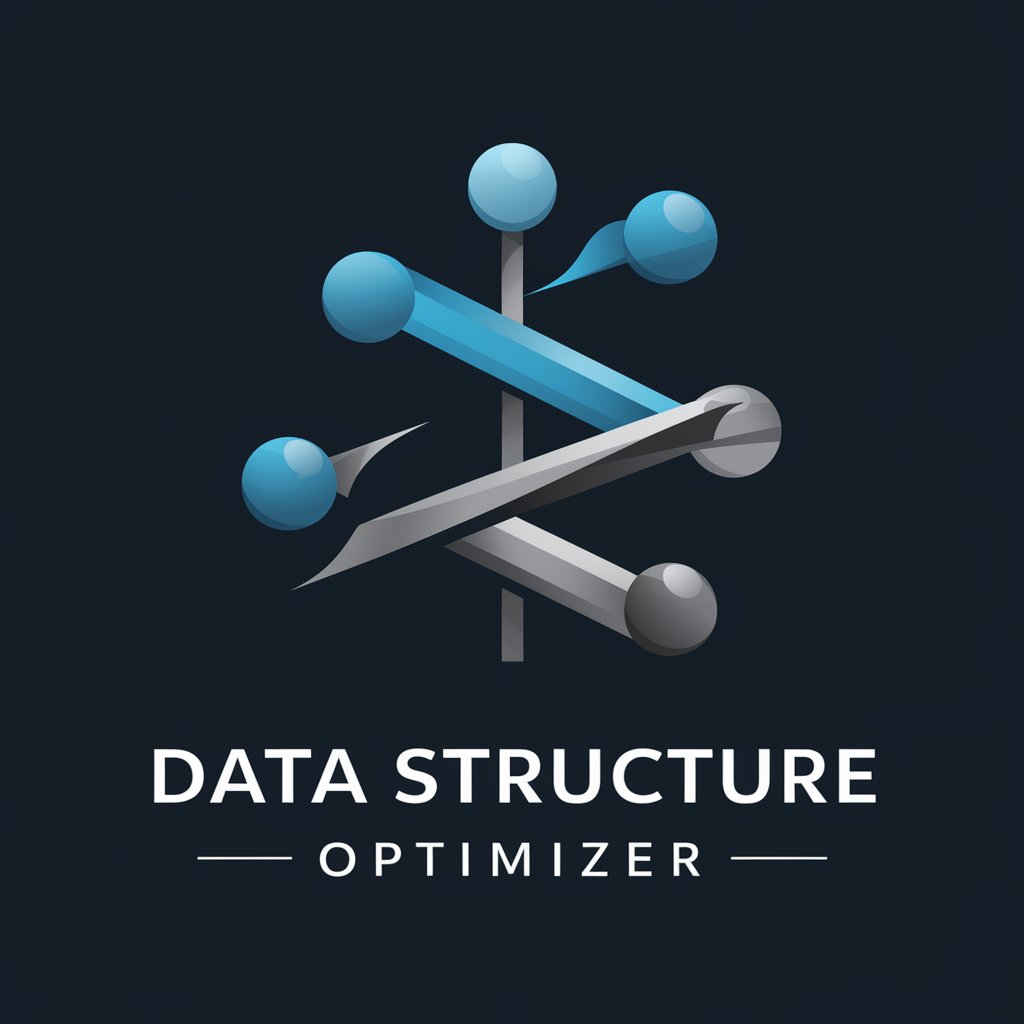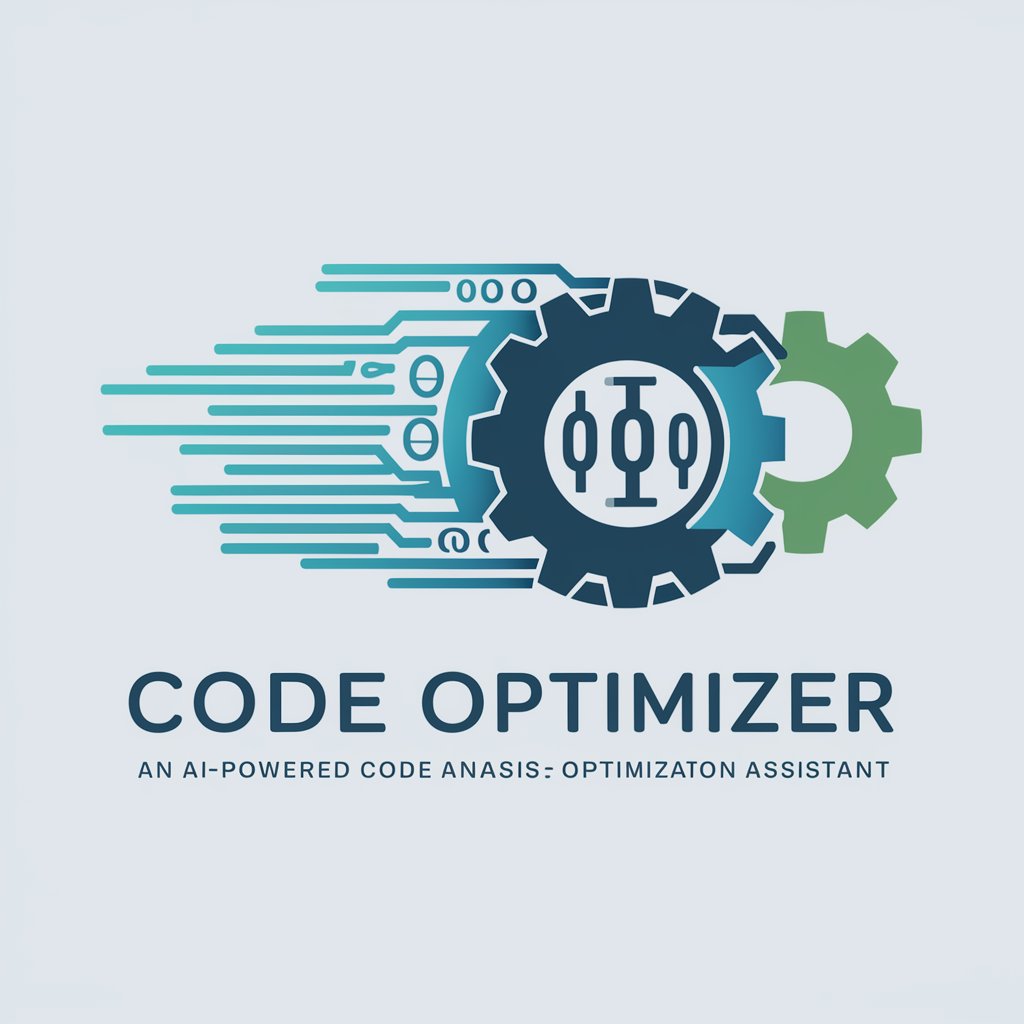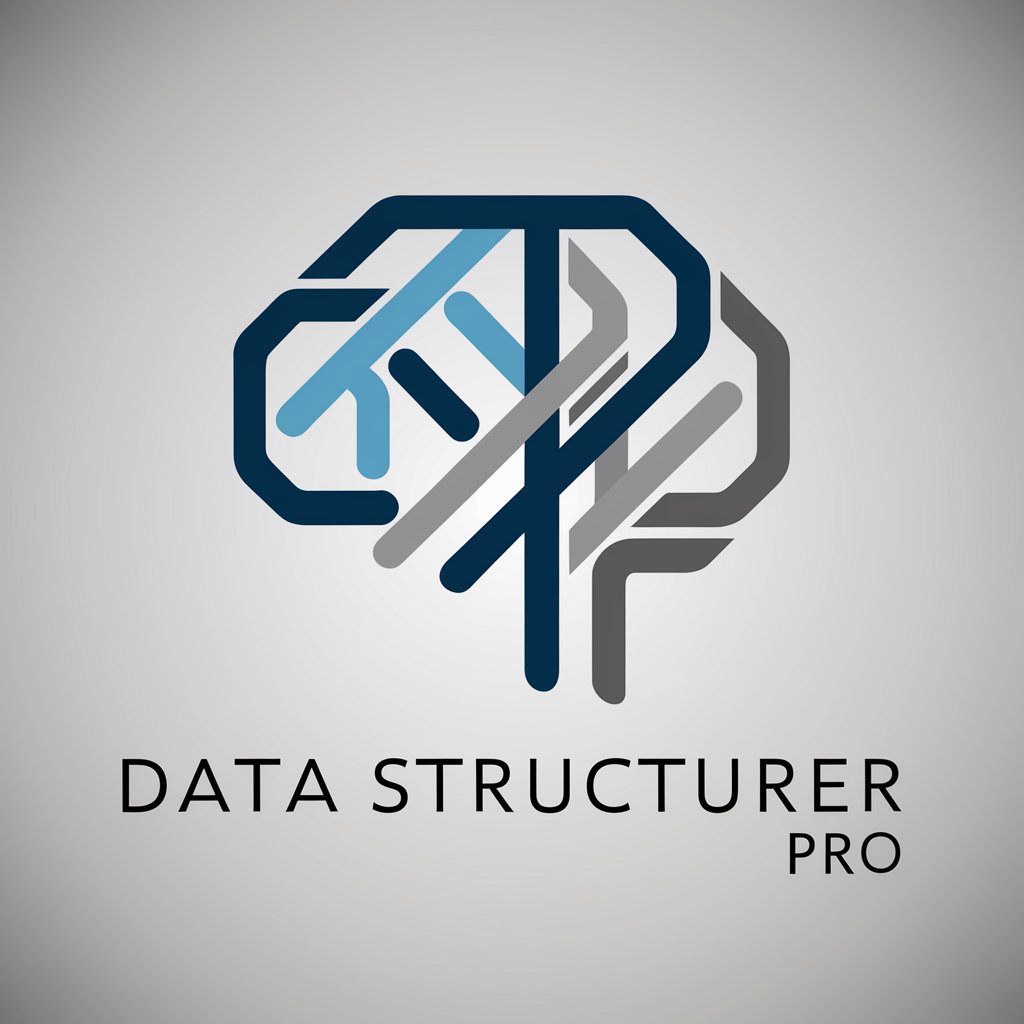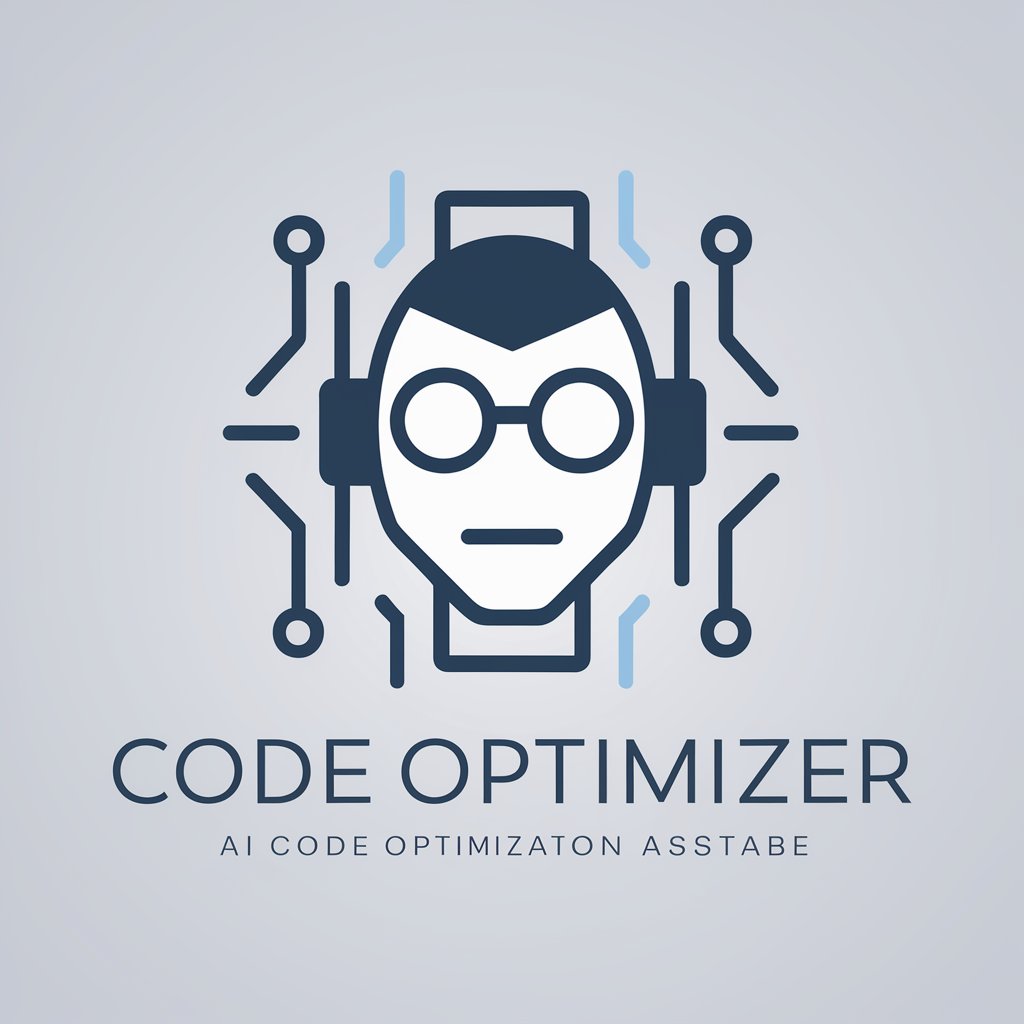
Data Structure Optimizer - Data Structure Analysis & Optimization

Welcome! Let's optimize your data structures effectively.
Optimize data structures with AI-powered insights
Explain the advantages and disadvantages of using a linked list over an array.
How can I optimize my binary search tree for faster search times?
What are the best data structures for handling large datasets with frequent updates?
Can you provide an example of implementing a hash table in Python?
Get Embed Code
Introduction to Data Structure Optimizer
Data Structure Optimizer is designed to guide users in selecting, optimizing, and implementing the most efficient data structures for their specific computing needs. Its core purpose revolves around providing expert advice on the use of various data structures, including arrays, linked lists, trees, graphs, and hash tables, tailored to the requirements of data size, access patterns, performance constraints, and memory usage. For example, a developer working on a high-performance database system may receive recommendations on using B-trees for efficient indexing, along with detailed explanations and code examples. Similarly, a data analyst looking to process large datasets efficiently might be guided towards using hash tables for quick lookup operations, complemented by scenarios showcasing the practical benefits of this approach in real-world data processing tasks. Powered by ChatGPT-4o。

Main Functions of Data Structure Optimizer
Performance Optimization
Example
Recommending the use of AVL trees over binary search trees for database indexing to minimize the time complexity of search, insert, and delete operations.
Scenario
Used in database management systems where balanced tree structures can significantly reduce search times in large datasets.
Memory Usage Reduction
Example
Suggesting the implementation of trie data structures for efficient storage and retrieval of strings, such as a dictionary of words, to save memory space.
Scenario
Applied in autocomplete features of search engines or text editors, where space efficiency and fast retrieval are crucial.
Data Access Pattern Analysis
Example
Analyzing and recommending the use of hash tables for key-value access patterns, improving time complexity from O(n) to O(1) for search operations.
Scenario
Beneficial for caching mechanisms where fast access to frequently used data is essential for system performance.
Scalability Advice
Example
Advising on the implementation of distributed hash tables (DHTs) for scalable peer-to-peer network applications, ensuring efficient data distribution and lookup.
Scenario
Critical for the design of scalable systems like decentralized file storage solutions or blockchain technologies.
Ideal Users of Data Structure Optimizer Services
Software Developers
Developers at all levels benefit from tailored advice on choosing the right data structures for their applications, improving code efficiency and performance.
Computer Science Students
Students gain a deeper understanding of data structure applications and optimizations through practical examples, enhancing their academic and research capabilities.
Data Scientists
Data scientists looking to optimize data processing and analysis workflows can apply these recommendations to handle large datasets more efficiently.
System Architects
Architects designing large-scale systems benefit from strategic advice on data structure selection to ensure scalability, performance, and maintainability.

How to Use Data Structure Optimizer
Start Your Journey
Begin by accessing a free trial at yeschat.ai, where you can explore Data Structure Optimizer's capabilities without the need for a ChatGPT Plus subscription or even logging in.
Identify Your Needs
Determine the specific data structure challenges you're facing. Whether it's optimizing storage, improving access time, or selecting the right data structure for your application, knowing your needs will help you utilize the tool more effectively.
Explore Features
Use the tool's features to analyze and optimize data structures. This includes comparing performance metrics, understanding memory usage, and receiving recommendations for data structure selection based on your specific requirements.
Apply Recommendations
Implement the suggested optimizations and data structure selections in your own projects. The tool provides examples and guidelines to facilitate understanding and application.
Iterate and Optimize
Continue to refine and adjust your data structures based on ongoing analysis and the evolving needs of your application. The tool is designed to support iterative improvement processes.
Try other advanced and practical GPTs
CASCO Creativity Mentor Marketer
Empowering Creative Marketing with AI

Corn Hater
Explore everything but corn with AI.

Painter's Pal
Empowering Your Creativity with AI

Effective Thesis Mentor
AI-powered thesis research mentorship.

Seminar in Auditing and Assurance Services Tutor
Empowering your auditing expertise with AI

Maternity Leave Calculator Powered by A.I.
Effortless Maternity Leave Planning, AI-Enhanced

EatCheapAndHealthy GPT
AI-Powered Healthy Eating on a Budget

Essay Buddy
Crafting Your Thoughts with AI Precision

EDM en de Digitale Wereld Zoekmachine
Unlocking EDM Knowledge with AI

相
Discover Yourself with AI-Powered Insights

yeahConcept SEO Texter & Analyzer
Elevate Your SEO Game with AI

aaa
Maximize Your Dropshipping Profits with AI

Frequently Asked Questions About Data Structure Optimizer
What is Data Structure Optimizer?
Data Structure Optimizer is a tool designed to assist developers and computer scientists in selecting, implementing, and optimizing data structures for their specific computing needs. It offers analysis, recommendations, and comparative insights on arrays, linked lists, trees, graphs, and hash tables.
Who can benefit from using this tool?
Both novice and experienced programmers, computer science students, data scientists, and anyone involved in software development or data processing can benefit from using Data Structure Optimizer. It aids in making informed decisions about data structure usage and optimization.
How does Data Structure Optimizer improve project performance?
By providing targeted recommendations on data structure selection and optimization, it helps in enhancing the efficiency of data access and manipulation, reducing memory usage, and improving overall application performance.
Can Data Structure Optimizer suggest alternatives to my current data structures?
Yes, based on the analysis of your application's requirements and existing data structures, it can suggest more efficient or suitable alternatives that could lead to better performance or reduced resource consumption.
Is prior knowledge of data structures necessary to use this tool?
While having a basic understanding of data structures can enhance your experience, Data Structure Optimizer is designed to be accessible to users with varying levels of expertise. It provides detailed explanations and guidelines to support users new to data structure optimization.





